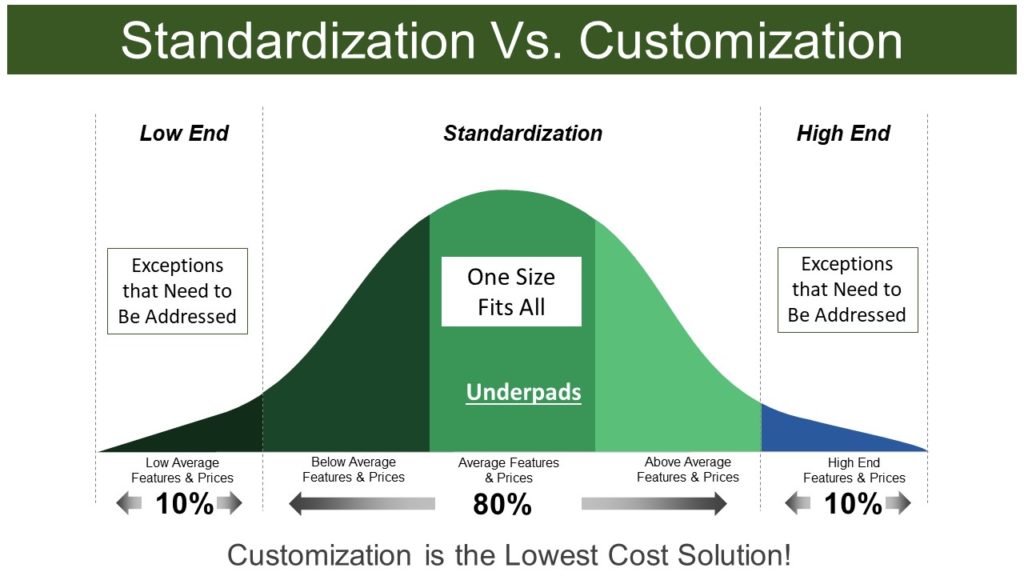Robert T. Yokl, President/CEO, SVAH Solutions
Standardization Vs. Customization
Conventional thinking would tell you that standardization is a good thing because it cuts down on variation and creates economy of scale, thereby enabling a buyer to obtain a better price. However, what we have found in our value analysis advisory practice is that standardization is a good thing up to a point, but it can also cost your customers money.
For example, when a hospital is 100% standardized on an item, the result is excessive cost. Approximately ten percent of the product is purchased off contract, 5% is over-specified, and 5% is wasted because one size doesn’t fit all customers. Whereas, a hospital that has customized its products (Figure 1) has 80% standardization, 10% specified for higher use, and 10% specified for lower end use. The bottom line is that the customized hospital is saving hundreds of thousands of dollars a year because it is providing the right products to its customers, while not undershooting or overshooting its target.
Figure 1
Value Analysis Case Study: Exam Glove Customization
Let’s use exam gloves as another example of how this concept works in the real world of value analysis. We have seen hundreds of hospitals, systems, and IDNs standardize on hypoallergenic disposable exam gloves for each and every employee (e.g. nursing, dietary, housekeeping, etc.) that is required to wear disposable gloves in their department. However, we recommend that healthcare organizations standardize on 80% or more on a vinyl exam glove house wide. Then, provide departments or employees who have special requirements (e.g. pharmacy, OB, outpatient, etc.) with their own specialty gloves to meet their exact functional requirements. This scenario would save a 250-bed community hospital hundreds of thousands of dollars annually on their exam glove purchases.
What Does This Mean to a Sales Representative?
When planning on quoting any of your products, services, or technologies, make sure you apply the 80/20 rule, which is that 80% of your hospital, system, and IDN customers will be able to standardize 80% or more on one product, service, or technology. However, about 10% of your customers can use a lower end product, service, or technology, and 10% will need a higher end product, service, or technology to meet their exact requirements. To determine what product, service, or technology will be acceptable to each customer segment you will need to conduct interviews, surveys, and focus groups. Here is a mathematical representation (figure 2) of this 80/20 rule (or customization concept) in action:
Figure 2
Under this scenario, your customer would have saved $32,021 on your proposal and you didn’t drop your price by one penny. We can almost guarantee that you would win the bidding war, too, with this positioning of your product, service, or technology. This is because you performed a value analysis study to determine your customers’ exact requirements. I can guarantee you that your competition won’t spend the time necessary to perform this study. You win, hands down!







